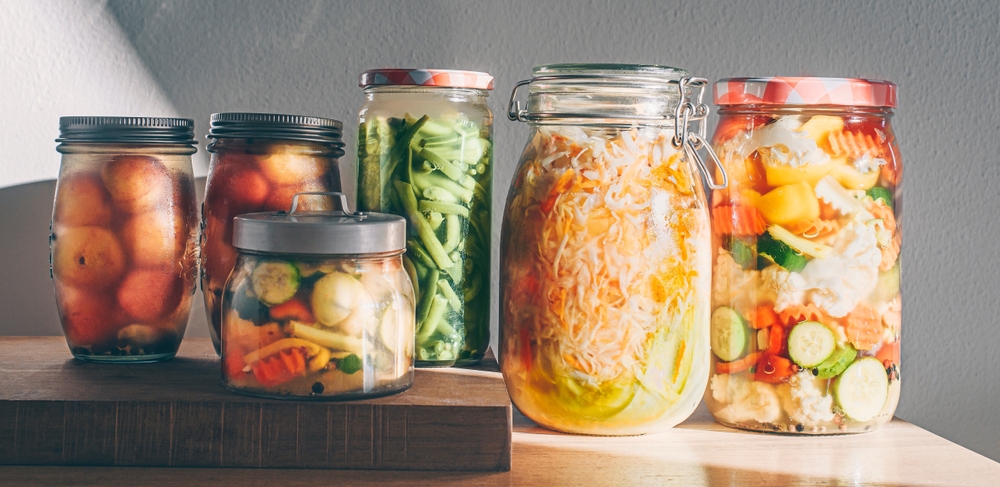Safe storage and handling tips for households
Clear, practical guidance on storing and handling food at home can improve safety, extend shelf life, and support sustainable habits. This overview highlights strategies for refrigeration and pantry storage, basic preservation and fermentation, sensible mealprep workflows, ingredient sourcing, and handling leftovers to reduce waste and risk.

Proper storage and careful handling of food items in the home protect flavor, nutrition, and health while helping households reduce waste. This article outlines practical practices for ingredients from the moment you bring them home through preparation, preservation, and reheating. It addresses refrigeration and pantry routines, simple preservation and fermentation options, mealprep workflows, sourcing and sustainability considerations, and safe approaches to leftovers and pairing ingredients for best results. This article is for informational purposes only and should not be considered medical advice. Please consult a qualified healthcare professional for personalized guidance and treatment.
How to store ingredients safely?
Store fresh produce, dairy, proteins, and dry goods in ways that preserve quality and reduce contamination. Keep raw meats on the lowest refrigerator shelf in sealed containers to prevent drips onto other items, and follow date labels when present. For dry ingredients like grains and spices, use airtight containers and a cool, dark pantry to slow rancidity and pests. Label containers with dates when you open bulk items. Maintain refrigerator temperature at or below 4°C (40°F) and freezer at -18°C (0°F) when possible. Regularly clean shelves and drawers, rotate stock by using older items first, and separate ready-to-eat foods from raw proteins to avoid cross-contact.
What preservation methods help reduce waste?
Preservation techniques such as freezing, canning, pickling, and drying extend usable life and support varied recipes. Freezing portions of soups, stews, or chopped vegetables is handy for mealprep and keeps nutrition relatively intact. Quick pickling of firm vegetables can add flavor and enable pairings for salads and sandwiches. Drying herbs or dehydrating fruit preserves concentrates flavors for cocktails, tea blends, or baking. When using home canning, follow tested procedures for acidity and processing times to ensure safety; unreliable canning can risk contamination. Thoughtful preservation reduces leftovers and supports sustainability by making the most of purchased ingredients.
How can mealprep and workflows improve safety?
Organized mealprep workflows reduce handling errors and streamline cooking. Plan recipes and portion sizes to minimize repeated reheating of the same food, and use labeled containers for single-serve storage. Create a prep sequence that keeps raw and ready-to-eat tasks separate — for example, chop vegetables before handling raw proteins, and wash hands and tools between steps. Use thermometers to ensure cooked foods reach safe internal temperatures. Efficient workflows also conserve energy and reduce time at the stove, which supports both convenience and safety while enabling smoother integration of spices and pairings into planned meals.
How does sourcing and sustainability affect household handling?
Where and how you source ingredients influences freshness, shelf life, and food safety. Buying from reliable local services or trusted suppliers in your area can shorten the time from harvest to plate, improving nutrient retention and reducing spoilage. Consider seasonal sourcing to reduce storage time and support sustainability. Inspect produce and proteins for signs of damage or poor handling before purchase. When buying in bulk to save money or reduce packaging, plan preservation and storage workflows to use items before quality declines. Sustainable sourcing decisions often complement preservation practices and minimize overall food loss.
What about fermentation, spices, and pairings?
Fermentation is a preservation technique that also enhances flavor and nutrition when done correctly. Simple ferments like yogurt, sauerkraut, or kefir rely on controlled salt, temperature, and clean equipment to encourage beneficial microbes. Keep spices in airtight containers away from heat and light to preserve aroma for both cooking and cocktails. Thoughtful pairings — matching acidity, fat, salt, and texture — can make small portions feel complete and minimize excess. For cocktails and other mixed beverages, prepare garnishes in small batches and store them chilled to maintain freshness and prevent bacterial growth.
How should leftovers be handled and reheated?
Treat leftovers with the same safety standards as freshly prepared food. Cool hot dishes quickly by dividing them into shallow containers and refrigerating within two hours. Label containers with the date and use within recommended timeframes: generally 3–4 days for most refrigerated cooked foods, while freezing extends life further. Reheat leftovers to steaming hot throughout or to an internal temperature of at least 74°C (165°F) to reduce risk. Avoid reheating multiple times; reheat only the portion you plan to eat. Mind nutrition when reconstructing meals: add fresh components like herbs or raw salad greens to maintain balance and appeal.
Conclusion Maintaining consistent storage habits, clear mealprep workflows, and basic preservation skills helps households protect food quality, reduce waste, and manage safety risks. Thoughtful sourcing and mindful use of spices, fermentations, and pairings enhance enjoyment while keeping nutrition and hygiene in view. Small, repeatable routines — cleaning containers, labeling dates, separating raw and ready-to-eat foods, and monitoring temperatures — create dependable systems that make everyday cooking, recipes, and cooking-related tasks safer and more sustainable.





